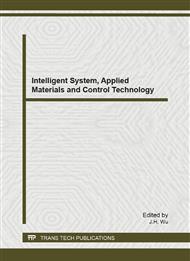p.19
p.24
p.30
p.34
p.39
p.43
p.47
p.52
p.56
Manufacturing Composite from Regenerated Wood Fiber and Polyethylene via Platen-Pressing Process
Abstract:
The technology of manufacturing wood-plastic composite (WPC) using polyethylene powder (LDPE) and regenerated wood fiber was studied. The effects of board density, the amount of coupling agent, hot pressing time and temperature on product properties were determined. The results show that the optimal parameters for making WPC are the ratio of regenerated wood fiber to polyethylene 6:4, the amount of coupling agent 0%, hot pressing time 10min, hot pressing temperature 180°C, hot pressing pressure 3.0 MPa, the mass ratio of alcohol consumption to plastic 3%. The resultant WPC had a modulus of ruputre (MOR) value of 21MPa, modulus of elasticity (MOE) of 1482 MPa, internal bond strength (IB) of 1.20MPa, moisture content of 0.98%, 24h thickness swelling of 5.69% and 24h water absorption rate of 24.8%. The properties of WPC without coupling agent is close to that of products containing coupling agent.
Info:
Periodical:
Pages:
39-42
Citation:
Online since:
January 2013
Authors:
Price:
Сopyright:
© 2013 Trans Tech Publications Ltd. All Rights Reserved
Share:
Citation:


